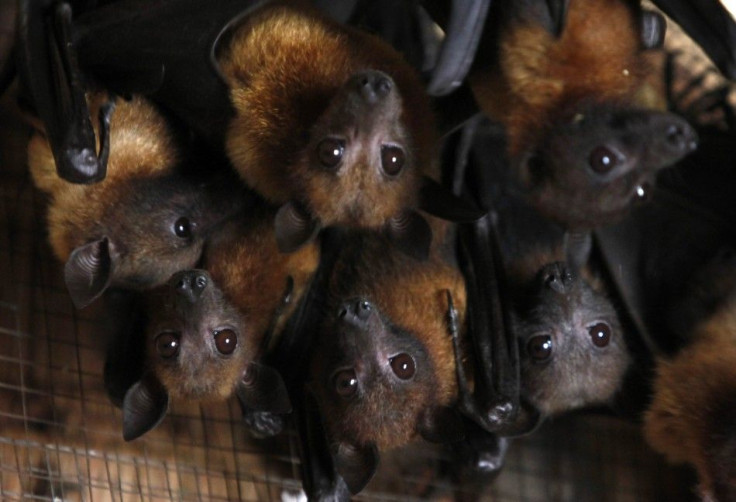Coronavirus Update: Study Reveals 781 Coronaviruses Found In Bats In China

KEY POINTS
- A new research analysis revealed an examination of coronaviruses found in bats located in China
- The study found 781 virus strains in the mammal samples examined
- Oral and rectal swabs as well as fecal samples were collected from hundreds of captured bat species
A team of international researchers and science experts recently published a comprehensive analysis of bat coronaviruses.
On May 31 (Sunday), a study was released on bioRxiv — a preprint server for biology, operated by Cold Spring Harbor Laboratory— revealing researchers' findings after examining the partial genetic sequences of 781 coronaviruses found in bats reportedly located in China. More than one-third of these have apparently never been published.
The funding for research on bat coronaviruses was also recently halted by the U.S. government, Science reported.
Though the research analysis cannot rule out the origin of SARS-CoV-2 — the virus strain that causes COVID-19 — scientists considered horseshoe bats to be the possible origin of the novel coronavirus. A similar disease, the 2003 SARS, was caused by viruses that came from these bats, which are members of the genus Rhinolophus.
According to the researchers, however, there is no conclusive proof that the novel coronavirus was transmitted from bats to humans. The study explained that none of the coronaviruses found in horseshoe bats were close enough to the new virus, and it was also possible that the immediate progenitor is from a different animal.
Wuhan lab admits to having three live strains of bat coronavirus on site https://t.co/E8HofFBsuO pic.twitter.com/mZRSDFgfV7
— New York Post (@nypost) May 24, 2020
“It seems that by sheer phylogeographic, historical, evolutionary bad luck, 'Rhinolophus' ends up being the major reservoir for SARS [severe acute respiratory syndrome]-related coronaviruses,” research co-author Peter Daszak revealed.
Daszak is also the president of EcoHealth Alliance, a global nonprofit scientific research platform that reportedly saw its multi-million-dollar funding to study bat coronaviruses with colleagues in China yanked by the U.S. National Institutes of Health (N.I.H.). Following the move, 77 Nobel laureates urged the N.I.H. to reconsider the decision to end the grant on May 21.
Shi Zheng-Li, a bat researcher at Wuhan Institute of Virology, is also among the research analysis’ co-authors. Shi was recently tainted with a controversial case and has received much scrutiny when President Donald Trump, as well as others, alleged that the COVID-19 virus was developed in their lab.
In recent reports, Shi strongly denied the claims, rejecting suggestions that her lab handled a virus closely tied to that of the COVID-19 strain.
With regards to the analysis of the developing SARS-CoV-2 virus as well as its correlation with bats, Shi, Daszak and their collaborators obtained hundreds of bat species in numerous Chinese provinces and took oral and rectal swabs from them between 2010 and 2015. Stool samples were also collected via tarps placed under the mammals’ colonies.
In the report by Science, genetic traces such as RNA were extracted from the mammal samples using standard lab techniques in order to amplify and sequence a short piece of the genome common to all coronaviruses. The method was used to further ascertain which bat genus carried the greatest diversity of the viral strains.
Among the varied bat genus samples, scientists found the Rhinolophus coronavirus as the closest relative yet. But though it was found that the genus manifested a 96.2% alikeness in sequence to the SARS-CoV-2 strain, researchers said it would take decades for that bat virus to mutate and replicate the COVID-19 pathogen.
The published study can definitely pose as useful instruction to back up further research, but it does not necessarily rest the case. Edward Holmes, an evolutionary biologist at the University of Sydney, said that the new study doesn’t exactly clarify the scenario.
Holmes, who has studied the genetics of bat coronaviruses and also co-wrote the paper that first revealed the sequence of SARS-CoV-2, suggested that looking for coronaviruses outside of bats may still lead to the origins of the new human pathogen.
“While bats are clearly major hosts for coronaviruses, until we have a wider sampling of wildlife species we will not be able to fully resolve the evolutionary events involved in the genesis of SARS-CoV-2, particularly whether it jumped straight from bats to humans or went through an intermediate host,” Holmes said.
Moreover, Daszak attests to this statement, agreeing that more animal species should be sampled. He revealed that closely related coronavirus traces have been detected in pangolins—where eight of these coronavirus sequences have been included in the research analysis.
“I think the pangolin story has a lesson for us: Don’t get stuck in a box thinking that this is all about bats,” Daszak said.

© Copyright IBTimes 2025. All rights reserved.




















